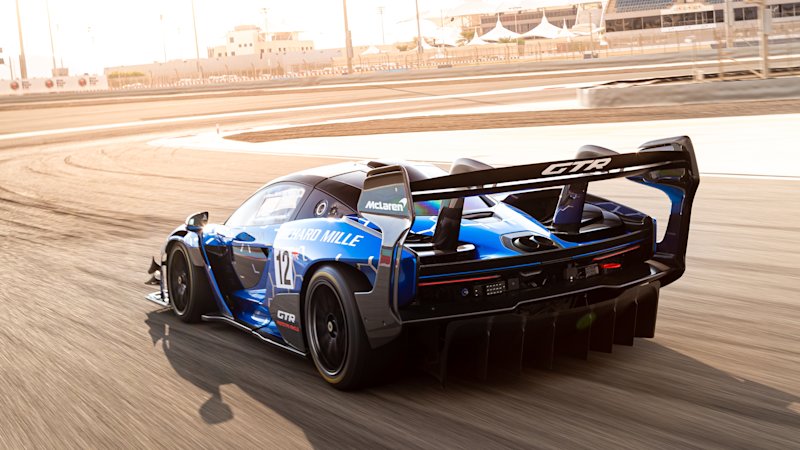McLaren launched the McLaren Tech Club last week with a brief episode about the aerodynamic magic of the open-top McLaren Elva. In part two of the video series, McLaren continues to explain how air and wind affect a car’s design, but this time it’s in a very different way. McLaren Principal Designer Esteban Palazzo dives into how the massive wing on the McLaren Senna GTR came to be and what purpose it serves. Three extra videos also show new footage of the Senna GTR testing in Bahrain.
Like the McLaren F1 GTR and McLaren P1 GTR that preceded it, the Senna GTR’s most prominent feature is its multi-tiered, multi-layered, carbon fiber pedestal wing. Palazzo says it was not only inspired by high-performance cars of the past and aircraft design, but also by the likes and tastes of the intended customers. In the case of the Senna GTR, Palazzo mentions science fiction and architecture.
The wing, which creates about 2,204 pounds of downforce and aids vehicle stabilization, has a few features that might not be immediately noticeable from photos or video. The shape takes design cues such as the endplates from LMP1 cars. In addition to connecting to the posts, the wing is further integrated into the car’s shape with attachments to the rear diffuser. The last piece mentioned is the automatic drag reduction system (DRS), a new piece of moving technology that helps with, well, minimizing drag.
After releasing episode two of the McLaren Tech Club, the Brits followed up with three videos of the Senna GTR testing on the Bahrain International Circuit, on which the Senna GTR holds the fastest race lap in the circuit’s current configurations. The first video offers an interactive 360-degree interior view, the second video shows the driver’s point of view, and the third video is shot from the Senna’s front splitter. McLaren does not say who is in the driver’s seat.
Episode three of the McLaren Tech Club should arrive at a similar time next week.




